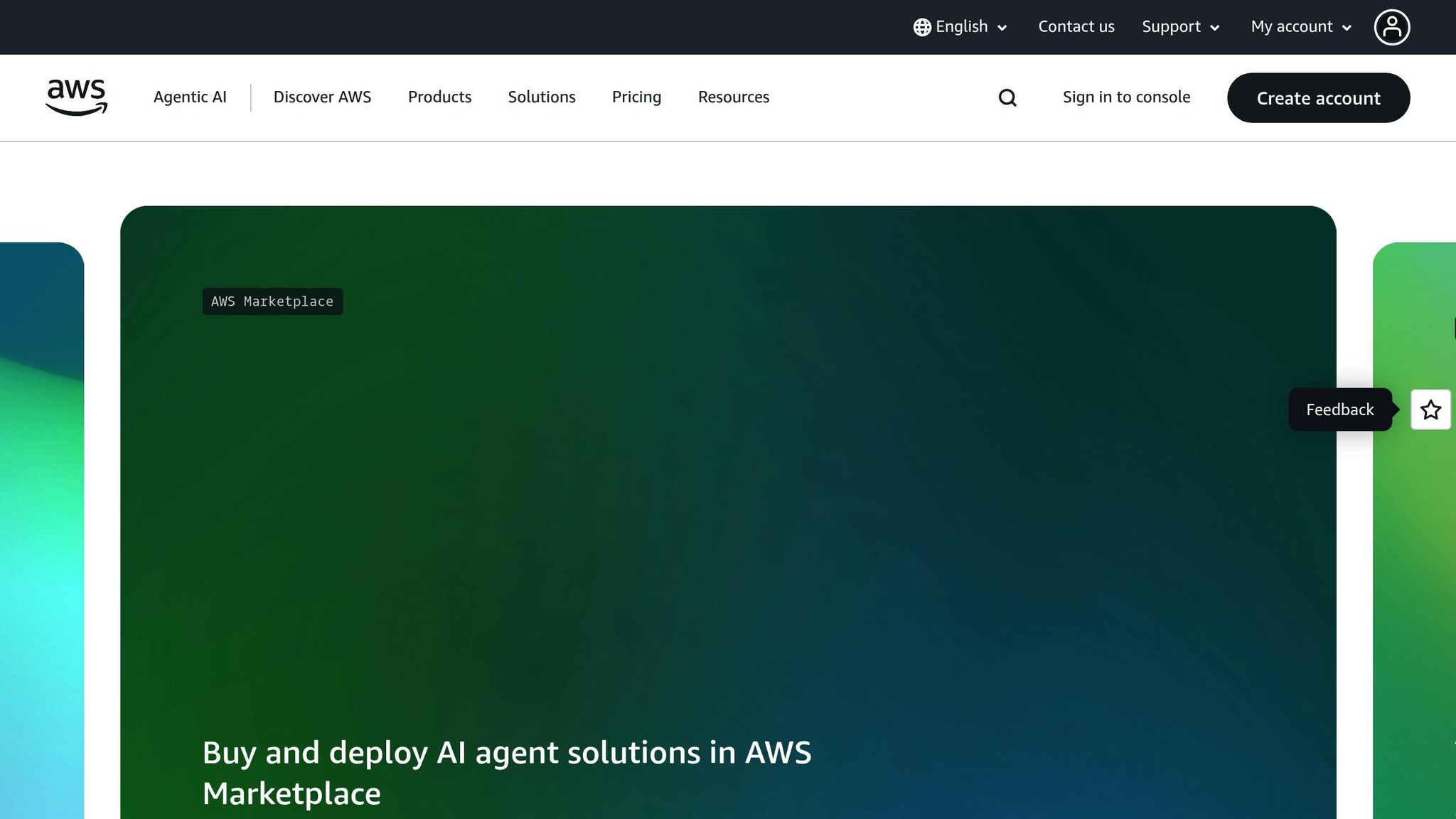Managing cloud costs across multiple regions requires balancing performance and expenses. Two main strategies are used: static provisioning and dynamic scaling. Static provisioning ensures consistent performance by maintaining fixed resources but often results in unused capacity and higher costs. Dynamic scaling adjusts resources based on demand, offering cost savings but requiring more complex management.
Key Points:
- Static Provisioning: Predictable costs but wasteful during low demand. Ideal for businesses prioritising consistent performance.
- Dynamic Scaling: Matches resources to demand, reducing waste but needs careful monitoring and configuration.
Quick Comparison:
| Aspect | Static Provisioning | Dynamic Scaling |
|---|---|---|
| Cost Efficiency | Predictable but wasteful off-peak | Pay only for needed resources |
| Performance | Stable, guaranteed capacity | Dependent on scaling setup |
| Management Complexity | Simple setup and maintenance | Requires fine-tuning and monitoring |
| Cost Reduction | Limited (e.g., reserved instance discounts) | Significant via spot instances, scaling |
For many businesses, a hybrid approach works best, combining static provisioning for baseline needs with dynamic scaling for demand spikes. Professional services, like those from Hokstad Consulting, can further optimise costs by analysing usage and implementing tailored strategies.
AWS re:Invent 2022 - Multi-Region design patterns and best practices (ARC306)

1. Multi-Region Elasticity with Static Provisioning
Static provisioning, unlike dynamic scaling, keeps resource allocations fixed, regardless of fluctuating demand. This method ensures consistent infrastructure capacity, whether you're serving a small or large user base across multiple regions. However, it comes with specific trade-offs in terms of cost and performance.
Typically, businesses allocate resources based on the highest traffic demands for each region. For instance, if your European operations peak during business hours and your Asia-Pacific region sees its heaviest usage at different times, you need to provision enough capacity for both - even if demand drops significantly during off-peak hours.
Cost Efficiency
While static provisioning offers predictable costs, it often leads to resource wastage. UK organisations, in particular, may find themselves paying for underutilised capacity in multi-region setups. Cross-region data transfer costs can also add up, especially with continuous background synchronisation and health checks. Additionally, budgeting becomes trickier when currency fluctuations, like changes in the pound's value, affect expenses across regions.
Balancing cost efficiency with this approach can be challenging, but it also impacts performance and reliability in meaningful ways.
Performance and Reliability
One of the key benefits of static provisioning is its ability to deliver consistent performance. Since resources are always available at full capacity, users experience stable application responses with minimal latency, even during traffic spikes or high-demand periods.
However, this method can lead to inefficiencies. For example, if one region consistently uses most of its allocated resources while another remains underutilised, the imbalance points to wasted capacity. Achieving the right balance between performance and cost requires careful planning and optimisation.
Cost Reduction Strategies
To manage costs effectively, consider these strategies:
- Right-sizing: Regularly analyse usage patterns to adjust resource allocations appropriately.
- Reserved instances: Commit to longer-term resource reservations to secure lower rates.
- Intelligent traffic routing: Redirect users to regions with spare capacity instead of defaulting to geographic routing.
- Scheduled scaling: Reduce resources during predictable low-demand times, such as overnight periods.
For more insights on optimising multi-region static provisioning and cutting unnecessary expenses, you can explore the cloud cost engineering services offered by Hokstad Consulting.
2. Multi-Region Elasticity with Dynamic Scaling
Dynamic scaling is a smart way to adjust resources in real time across different regions. It reacts to traffic patterns by increasing capacity during busy periods and reducing it when demand slows down. For instance, if users in London generate high traffic during business hours while another region remains quieter, the system reallocates resources to meet the demand where it’s needed most. This approach not only keeps performance steady but also sets the stage for cost savings, which we’ll explore further.
Cost Efficiency
One of the standout benefits of dynamic scaling is its ability to eliminate the costs of unused resources by charging only for what’s actually needed [1]. It also takes advantage of differences in GPU availability and pricing across cloud regions [2]. By shifting workloads to regions with lower rates or using spot instances, companies can achieve substantial savings. This means organisations can handle traffic surges effectively without over-provisioning resources for the worst-case scenario.
Performance and Reliability
Dynamic scaling, while efficient, requires careful setup to maintain high performance. Unlike static provisioning, which is straightforward but less flexible, dynamic scaling must strike a balance between speed and cost. Auto-scaling policies need to be fine-tuned: overly aggressive settings could waste resources on brief traffic spikes, while overly cautious ones might delay scaling during genuine surges. Additionally, managing cross-region failover adds another layer of complexity. Properly calibrating thresholds and policies is essential to ensure both reliability and a smooth user experience. These adjustments are critical to fully realise the cost and performance benefits of dynamic scaling.
Cost Reduction Strategies
Dynamic scaling can push costs down even further by using spot instances. For organisations aiming to optimise these strategies, Hokstad Consulting provides cloud cost engineering services, which have been shown to cut expenses by 30–50%.
Need help optimizing your cloud costs?
Get expert advice on how to reduce your cloud expenses without sacrificing performance.
Pros and Cons
To better understand the trade-offs between static provisioning and dynamic scaling, the table below outlines their key advantages and challenges. Each approach impacts cost, performance, and management differently, making it essential to weigh these factors carefully when deciding on cloud infrastructure strategies.
Static provisioning offers stable, predictable performance and is relatively easy to manage. However, it often results in paying for unused capacity during off-peak times. This is because organisations generally plan for peak demand, even though such peaks occur infrequently.
Dynamic scaling, on the other hand, adjusts resources to match current demand, preventing unnecessary expenses. It’s particularly useful for handling fluctuating workloads and taking advantage of cost variations across cloud regions. However, this flexibility comes with added complexity. Effective use requires robust monitoring systems and finely tuned scaling policies. Poorly configured thresholds can lead to resource shortages during demand surges or unnecessary scaling during minor traffic spikes.
| Aspect | Static Provisioning | Dynamic Scaling |
|---|---|---|
| Cost Efficiency | Predictable but wasteful during off-peak times | Efficient, paying only for what is used |
| Performance | Reliable with guaranteed capacity | Variable, depending on scaling speed and configurations |
| Management Complexity | Straightforward to implement and maintain | Requires ongoing monitoring and fine-tuning |
| Cost Reduction Potential | Limited to reserved instance discounts and regional pricing | Significant savings through spot instances and demand-based scaling |
| Risk Level | Low risk of performance issues but prone to cost overruns | Higher risk of temporary performance dips during scaling |
These comparisons highlight the strengths and limitations of each approach, providing a clear framework for making informed decisions about cost optimisation.
Ultimately, the choice between static provisioning and dynamic scaling depends on an organisation's priorities. Businesses that value predictable performance and simplicity may lean towards static provisioning. Meanwhile, those with variable workloads and the expertise to manage complex auto-scaling systems can benefit significantly from dynamic scaling.
Conclusion
When it comes to managing cloud resources, static provisioning works well for predictable workloads, while dynamic scaling is ideal for handling fluctuating demand. Static provisioning is a good fit for businesses that value consistent performance over cost savings, whereas dynamic scaling offers better cost efficiency for organisations with variable workloads and the technical expertise to manage auto-scaling systems.
Blending these strategies can maximise their benefits. UK businesses can start by auditing their current cloud spending and resource usage. This step is crucial for making informed decisions about resource allocation and scaling policies, which can lead to immediate cost reductions.
A hybrid approach could be the answer for many organisations. For example, static provisioning can cover baseline capacity needs, while dynamic scaling can manage traffic spikes and seasonal changes. Additionally, taking advantage of regional pricing differences - known as regional cost arbitrage - can further cut expenses. By shifting non-latency-sensitive workloads to lower-cost regions, such as moving tasks from eu-west-2 (London) to eu-west-1 (Ireland) or eu-central-1 (Frankfurt), businesses can save money without affecting user experience.
For companies looking to optimise their multi-region cloud costs, professional guidance can make a big difference. Hokstad Consulting offers cloud cost engineering services that claim to reduce expenses by 30–50%. Their expertise includes strategic optimisation, automated scaling solutions, and detailed cost audits. With a No Savings, No Fee
model, businesses can explore cost-saving measures without upfront financial risks.
Ultimately, successful cost optimisation requires ongoing monitoring, regular updates to policies, and staying informed about changes in cloud pricing. By tailoring a mix of static and dynamic strategies to your business needs, UK organisations can achieve substantial savings while ensuring reliable performance for their customers.
FAQs
How can businesses find the right balance between fixed provisioning and dynamic scaling for their cloud workloads?
To find the right balance between fixed provisioning and dynamic scaling, businesses need to consider their workload patterns and cost priorities. Fixed provisioning is a good option for workloads that are steady and predictable, offering straightforward management and stable costs. On the other hand, dynamic scaling is better suited for fluctuating demand, as it adjusts resources in real time, helping to cut down on unnecessary expenses.
A smart way to optimise this balance is by using predictive scaling. This involves analysing historical usage data to forecast workload changes. With this strategy, businesses can avoid over-provisioning, which leads to wasted resources, and under-provisioning, which can hurt performance. Matching resource allocation to actual demand ensures cost-effectiveness without compromising on performance reliability.
What challenges might businesses face when using dynamic scaling across multiple cloud regions?
Implementing dynamic scaling across multiple cloud regions comes with its fair share of hurdles. One of the biggest concerns is managing costs. Expenses can quickly pile up due to factors like data replication, inter-region bandwidth charges, and ensuring compliance with local regulations. Without close monitoring, these costs can spiral out of control.
Another significant challenge is ensuring data consistency and reliability across regions. Synchronising data between geographically dispersed locations often introduces latency, which can hurt application performance. On top of that, managing the complexity of infrastructure across multiple regions demands careful planning and a high level of expertise to keep things efficient and scalable.
To tackle these challenges, businesses need to refine their cloud architecture and adopt strategies that are both efficient and cost-conscious. For those seeking expert advice, Hokstad Consulting provides customised solutions designed to cut cloud expenses while maintaining top-notch performance.
How can businesses use regional cost differences to reduce cloud expenses without affecting performance?
Businesses can save money by leveraging regional cost differences in cloud services, choosing locations where prices are lower - provided latency and performance stay within acceptable levels. This requires a thorough review of regional pricing and ensuring workloads are strategically placed to strike the right balance between cost savings and operational efficiency.
Using automation can take this a step further. By dynamically scaling resources and adjusting workload placements based on real-time data - like demand, costs, and performance - businesses can maintain consistent service quality while avoiding unnecessary expenses. Regularly revisiting your cloud cost management strategy and sticking to best practices can help fine-tune spending without sacrificing performance.
